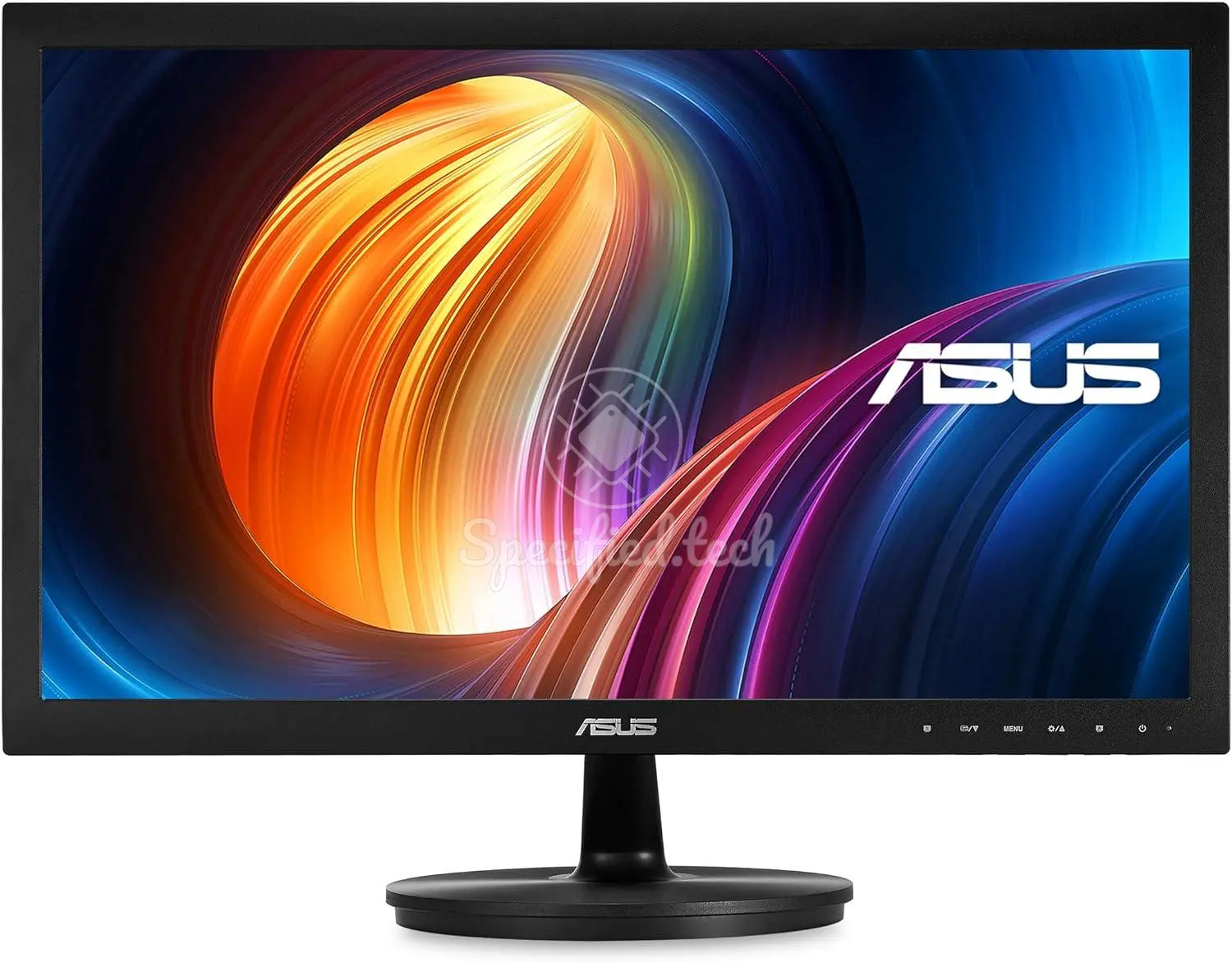
Within this article we will take a closer look at the technical specifications of the VS229H monitor from Asus. For this we will talk about all possible categories that could be relevant. To start with, we will look at the display, talk about the design and in the next section we will go into the features of the monitor. Other features such as power consumption, connectors and certifications will follow later in the text.
Display
The monitor belongs to the device class 21 inches ( 54.6 cm on the diagonal). The size specification of a monitor refers to the screen diagonal, which is usually specified in inches. It is only comparable to a limited extent for different formats. For example, a conventional 4:3 monitor with the same screen diagonal has 6% less width, but 13% more height and a total of 7% more surface area than a monitor in 16:10 format. Despite the difference in working area, wider monitors are better suited for consuming games or current movies, for example. It is also easier to display several documents simultaneously on widescreen monitors. So, it depends on the current use case whether the aspect ratio of 1.778 : 1 makes sense for the intended use case. The display is a IPS panel. The panel has a resolution of 1920 x 1080 px. The pixel density is 102 ppi. The pixel pitch is 0.248 mm. The continuous possible brightness specified by the manufacturer Asus is 250 nt. The panel is illuminated by W-LED. The built-in panel ensures stable color reproduction of the image, even at deviating viewing angles, by means of its 178 ° (horizontal) viewing angle. Asus promises stable color reproduction moreover within a 178 ° vertical angle. The refresh rate is horizontally seen at the VS229H 30 khz to 83 khz. Vertically, however, the image renews at a minimum rate of 50 hz up to 75 hz. The analog refresh rate of this monitor is 30 khz to 83 khz. The frame rate in the analogue range is vertical at the VS229H 50 hz to 75 hz. The minimum response time of the monitor is ms. The display panel is Anti-glare/Matte.
Color representation
The panel has a bit depth of 8 per color channel, but what does that mean? The number of bits determines how many colors can be encoded for the individual pixels of the display. For an 8-bit panel, for example, this is 256 different colors (2^8 = 256). However, since we usually display three different colors per pixel at the same time, in theory about 16 million (256^3) different colors are possible by mixing the three pixels. A 10-bit panel could even display a billion colors. According to the manufacturer, the coverage of the NTSC 1953 color space is 72 %.
Contrast ratio
Contrast ratio is a common measurement used to represent the maximum relative differences in brightness between black and white. It describes the ability of a screen or projector to produce a high-contrast image and is the quotient of the maximum and minimum displayable luminance. The higher the values are away from each other, the stronger the quantitatively seen difference between black and white is set up, which in turn results in an improved image quality. This monitor from Asus has a static contrast ratio of 1000 : 1 , according to the manufacturer. In contrast to the static contrast ratio, the dynamic contrast ratio changes the brightness of the panel itself in addition to the difference measurement from black to white. In addition to the difference between the brightest and the darkest pixel, the backlight is thus changed. Since the brightness of the panel may not be able to be adjusted exactly to a single pixel, a so-called halo effect is possible. The value of 80000000 : 1 of dynamic contrast ratio for the monitor VS229H cannot provide any information about the severity of the halo effect here. Therefore, it is more useful to compare the static contrast ratio.
HDR
The monitor supports all HDR modes listed here:
screen design
If you want to place the monitor described here on the desk without a wall mount, you should allow for 38.5 x 51.4 x 20 cm (HxWxD) of space. As for the weight, Asus states a total weight of 3.1 kg with stand.
Rotate, tilt and swivel
The monitor from Asus cannot be rotated. The monitor cannot be swiveled. This feature could be retrofitted with a third-party stand. The monitor VS229H can be tilted. The angle of inclination to the rear is 20. The monitor can be tilted forward by 5 degree.
Ports
The monitor can be connected via 1 VGA ports.
camera
This monitor does not have a camera.
Features
- Flicker Free: Asus 's Flicker Free technology minimizes distracting screen flicker, allowing you to work and/or play longer without restrictions.
- The display/monitor supports Frame Rate Compensation.
Power consumption
On average, the monitor consumes approximately 15.93 w. The maximum power consumption (peak) specified for this monitor is 6.5 w. In standby mode, the device consumes approximately 0.5 w. When switched off, on the other hand, the monitor consumes only 0.5 w. The monitor can be operated on a 110v power supply. The monitor can be operated on a 220v power supply. The power grid has to supply a frequency of 50 hz to 60 hz.
Environment
The maximum permissible ambient temperature is 40 °C during operation. Below a temperature of 0 °C , the monitor from Asus should again not be used. The maximum storage temperature should be according to Asus 60 °C. Minimal were given by Asus -20 °C.
Further information
- 100x100

